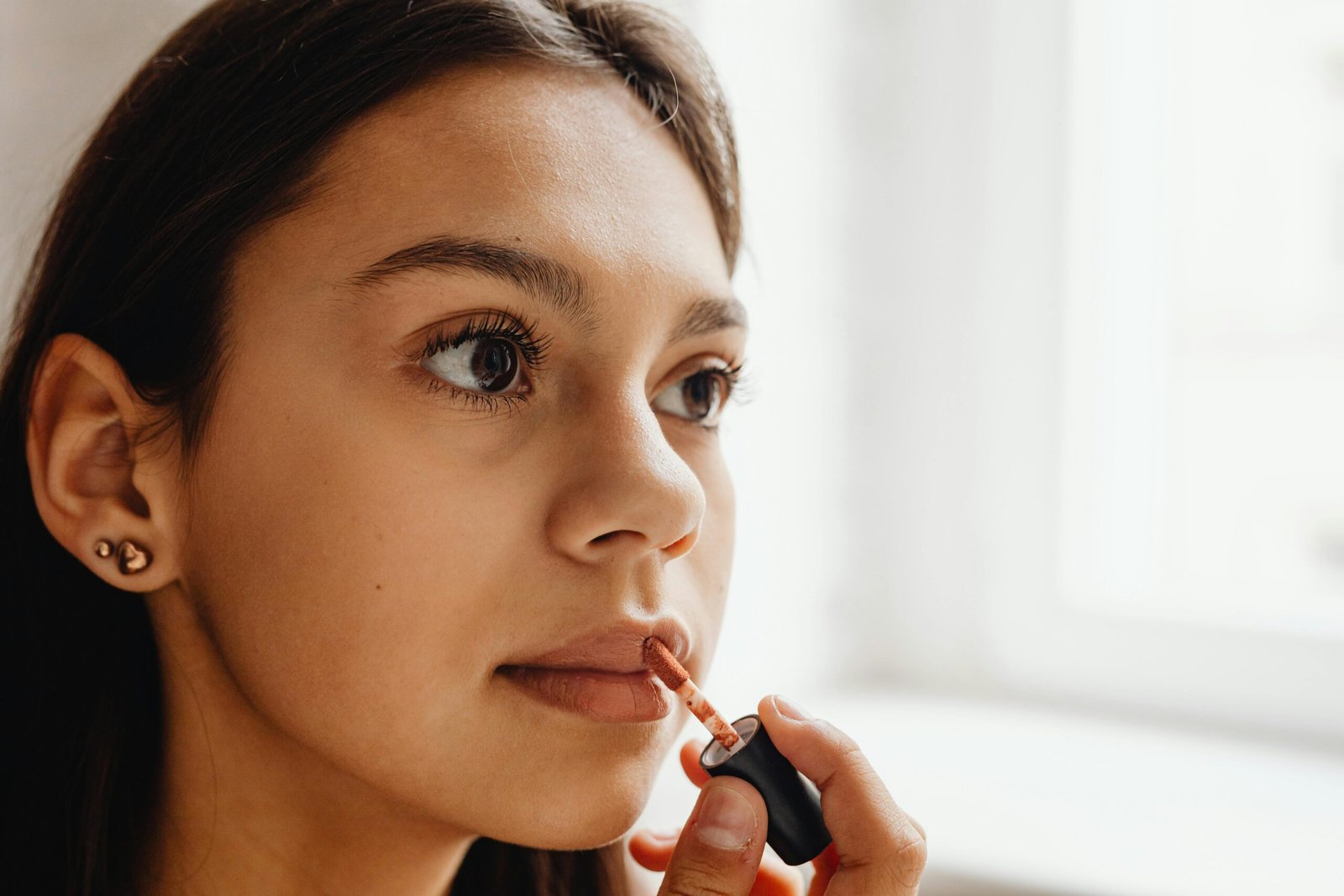Curious about lip fillers? Before you take the plunge, here’s a heads-up. While those plump pouts on the top lip look fantastic, understanding their permanence is crucial. Let’s dive in and uncover key facts about people that might surprise you. Not all lip fillers last forever – some are temporary! The process isn’t as permanent as tattoos; it’s more like renting an apartment than buying a house.
Thinking about enhancing your lips with fillers? Hold on – there’s more to it than meets the eye. Whether you’re a newbie or a seasoned pro, these essential nuggets will shed light on what to expect when opting for luscious lips that pop!
Understanding Lip Fillers
Lip fillers come in various types, each offering different results. It’s crucial to understand the distinctions among them to achieve your desired outcome. Selecting the appropriate filler Material is essential for a successful lip enhancement procedure
When opting for lip fillers, it’s vital to grasp the lip process details thoroughly. Before treatment, adequate preparation is necessary. Discussing your medical background with the provider ensures safe and effective results post-procedure.
After getting lip fillers, managing discomfort and swelling is common. Following the instructions diligently promotes proper healing and optimal results.
Lip Filler Results and Duration
Setting realistic expectations for aftercare, Lip filler results are crucial. Discuss your desired outcome with the practitioner to ensure alignment. Understand the limitations of lip fillers; not all requests may be achievable
Lip fillers offer a temporary solution for enhancing lips. They are not permanent, so it’s essential to comprehend their temporary nature. Typically, lip fillers last between six months to a year before requiring touch-ups or additional treatments
Safety and Side Effects
Potential Risks
Lip filler treatments come with include potential risks that everyone should be aware of. These risks include allergic reactions, infection, and Lumps or asymmetry in the lips. It’s crucial to discuss these potential complications with your practitioner before undergoing treatment to make an informed decision.
When considering lip fillers, understanding the possible risks is essential for your safety. Being informed about the potential side effects can help you recognize any issues post-treatment. By discussing these concerns with your practitioner, you can address any doubts or fears you may have regarding the procedure.
Side Effects Management
Managing Common side effects of lip fillers is important for a smooth recovery process. Tips such as applying ice packs to reduce swelling and avoiding strenuous activities can help minimize discomfort and bruising after treatment. Knowing when to seek medical attention for Severe side effects, like extreme pain or prolonged swelling, is crucial for your well-being post-procedure
If you notice any unusual symptoms following a lip filler treatment, it’s vital to consult your practitioner promptly. Seeking medical attention when experiencing severe side effects ensures proper management and timely intervention if needed.
Preparation for Procedure
Consultation Process
During a lip filler consultation, you will discuss your goals and concerns with the practitioner. They will assess if you are suitable for the treatment based on your medical history and expectations. This is crucial to ensure that the procedure aligns with what you desire.
- Discussing your goals and concerns with the practitioner
- Assessing your suitability for lip filler treatment
Decision Making
When deciding whether to get lip fillers, consider various factors such as potential risks and benefits. It’s essential to weigh the pros (enhanced appearance) against the cons (possible side effects). By carefully considering these aspects, you can make an informed decision about enhancing your lips.
- Factors to consider when deciding to get lip fillers
- Weighing the pros and cons of lip filler treatment
Pain Management
During Procedure
When getting lip fillers, several steps are involved in the procedure. The injection process is relatively quick, usually taking about 15 to 30 minutes. The area may be numbed with a local anesthetic or an ice pack before the injections to reduce pain.
To ensure comfort and safety during the treatment, individuals need to communicate their pain tolerance levels with the practitioner. Avoiding blood thinners like aspirin before the procedure can also help minimize bruising and discomfort post-treatment.
- Steps:
- Numbing of lips
- Injection process
- Communication on pain tolerance
- Safety Measures:
- Avoid blood thinners
- Communicate any discomfort
Aftercare Tips
Immediate Aftercare
Right after getting lip fillers, it’s crucial to follow post-treatment care instructions provided by your practitioner. To manage swelling and bruising, apply ice packs intermittently for short periods. Avoid intense physical activities and exposure to the sun or heat to promote proper healing.
Engaging in certain activities like vigorous exercise can impact the results of your lip filler treatment negatively. It’s essential to be gentle with your lips post-treatment and avoid behaviors that could lead to complications.
Long-term Maintenance
Understanding the importance of long-term maintenance is key in ensuring lasting results from lip fillers. Discussing follow-up treatments with your practitioner help maintain the desired look over time. These appointments are crucial for touch-ups and adjustments as needed.
Regular consultations with your practitioner allow them to monitor the condition of your lips and recommend any necessary actions for maintaining optimal results.
Recovery Process
First-Time Tips
Getting lip fillers for the first time can be exciting and nerve-wracking. During your initial experience, expect some discomfort during the injection process, but it’s generally tolerable. Before your appointment, prepare questions to ask your practitioner about the recovery process and what to expect post-treatment.
- Helpful tips for individuals getting lip fillers for the first time
- What to expect during your initial lip filler experience
- Questions to ask your practitioner as a first-time patient
Recovery Timeline
After receiving lip fillers, The recovery timeline varies from person to person. Typically, you may experience swelling and bruising that will subside within a week or two. Final results usually appear after one to two weeks post-treatment. Factors like individual healing capacity and aftercare practices can in uence how quickly you recover.
- Typical recovery timeline after lip filler treatment
- When to expect the nal results of lip fillers
- Factors that may affect the recovery process
Cost Considerations
When considering the Permanence of lip fillers, it’s crucial to understand the associated costs. Initially, the price of lip filler treatments can vary based on several factors such as the type of filler used, the expertise of the practitioner, and geographic location. Comparing prices from different clinics or practitioners can help you nd a suitable option that ts your budget.
For long-term maintenance, it’s essential to factor in follow-up treatments and touch-ups to maintain your desired results. Budgeting for these additional costs is important for ensuring that you can sustain your lip fillers over time. Discussing pricing options with your practitioner can provide clarity on what to expect in terms of ongoing expenses related to maintaining your lip fillers
- Understanding the initial costs associated with lip fillers
- Factors influencing the price of treatments
- Comparing prices from different practitioners or clinics
- Considering long-term maintenance costs
- Budgeting for follow-up treatments and touch-ups
- Discussing pricing options with your practitioner
Choosing a Qualified Practitioner
When seeking a practitioner for lip filler treatments, Qualifications are crucial. Look for certifications and training that demonstrate expertise in administering lip llers. Ensuring your chosen practitioner is qualified and licensed guarantees safe and effective procedures.
Experience plays a vital role in the success of lip filler treatments. Opting for a practitioner with Extensive experience in lip augmentation enhances the likelihood of achieving desirable results. Assessing their track record and client testimonials can provide valuable insights into their proficiency.
- Seek certifications and training
- Verify licensing before proceeding
- Experience is key to successful outcomes
- Check track record and client feedback
Summary
You’ve now got the lowdown on lip fillers, from understanding the procedure and results regarding safety, costs, and aftercare. It’s crucial to be well-prepared and choose a skilled practitioner for a smooth experience. Remember, your lips are unique, so what works for someone else may not be the best for you. Always prioritize safety and quality over cost. Now that you’re in the know, go rock those luscious lips with confidence!
Frequently Asked Questions
How long do lip fillers last?
Lip fillers typically last between 6 to 12 months, depending on the type of ller used and individual metabolism. Factors like lifestyle choices and facial expressions can also influence The longevity of results.
Are there common side effects after getting lip fillers?
Common side effects include swelling, bruising, redness, and tenderness at the injection site. These usually subside within a few days. Severe complications are rare but may include allergic reactions or lumps forming under the skin.
Is it painful to get lip fillers?
Discomfort during the procedure is minimal as numbing agents are used. Afterward, some patients experience mild pain or soreness that can be managed with over-the-counter pain relievers. The level of discomfort varies from person to person.
How much does a typical lip filler procedure cost?
The cost of lip fillers varies based on factors like the type of filler used, practitioner expertise, geographic location, and clinic reputation. On average, prices range from $500 to $2,000 per session.
What should I look for when choosing a practitioner for lip fillers?
When selecting a practitioner for lip llers, consider their qualifications (certifications), experience in performing such procedures successfully, reviews/testimonials from previous clients, hygiene standards at their practice, and communication skills in understanding your needs.



